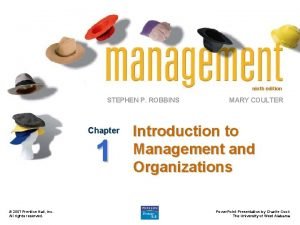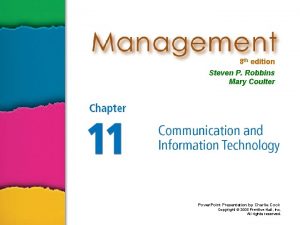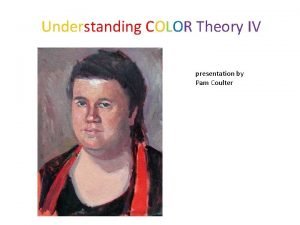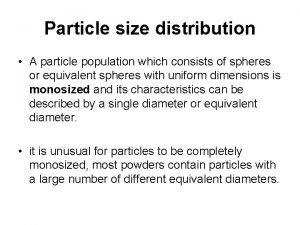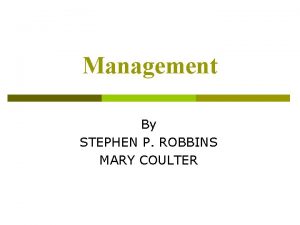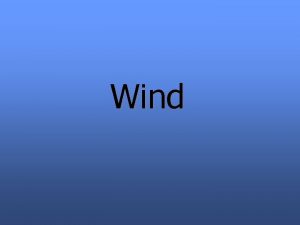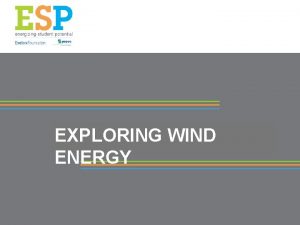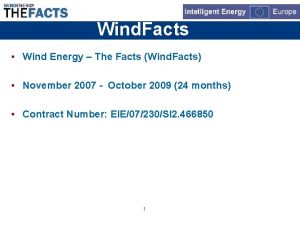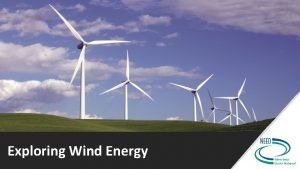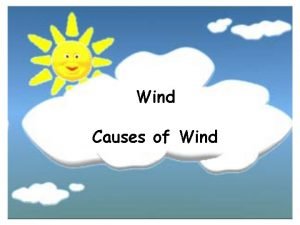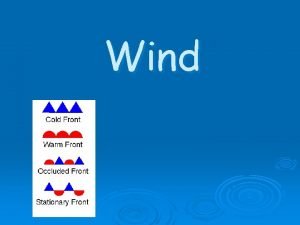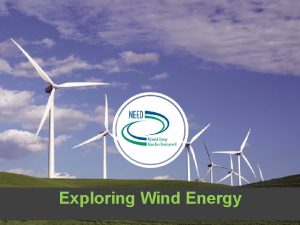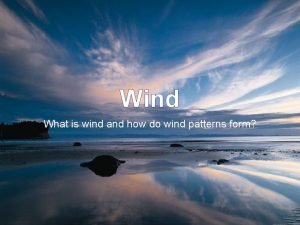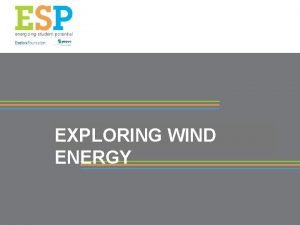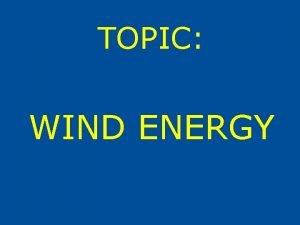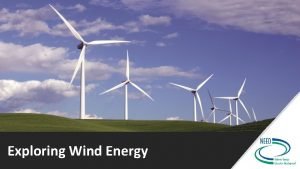Wind COULTER What is wind Wind is the













- Slides: 13

Wind COULTER

What is wind? • Wind is the horizontal movement of air from an area of high pressure to an area of lower pressure. • Most differences are caused by the unequal heating of the atmosphere. • Hotter less dense air is forced to rise by the cooler more dense air underneath.

What is wind continued • Measuring wind: wind is described by its direction and speed. • Wind direction is determined by a wind vane. • The wind swings the wind vane so that one end points into the wind. • Wind speed can be measured by an anemometer (an uh mahm uh tur). • An anemometer has three or four cups mounted at the end of the spokes that spin on an axle. The force of the wind against the cups turns the axle. A meter on the axle shows the wind speed.

Wind chill factor • On a warm day, a cool breeze can be amazing! • During the winter, the same breeze can make you very uncomfortable. • Wind blowing over your skin removes body heat. • The stronger the wind the colder you feel. • The increased cooling a wind can cause is called wind chill factor

Local winds • Local winds are winds that blow over short distances. • Local winds are caused by the unequal heating of Earth’s surface within a small area. • Unequal heating often occurs along the shore of large bodies of water. • It takes more energy to warm up a body of water than it does to warm up an area of land. • Sea breeze: is a local wind that blows from an ocean or lake. • Land breeze: the flow of air from land to a body of water.

Global wind • Like local winds, global winds are created by the unequal heating of Earth’s surface. But unlike local winds, global winds occur over a large area. • Global convection currents: • • • Temperature differences between the equator (hot hot) and the poles (cold) produce giant convection currents in the atmosphere. Air pressure tends to be lower at the equator and higher at the poles. The difference in pressure causes winds at Earth’s surface to blow from the poles toward the equator. High in the atmosphere air flows away from the equator toward the poles Those air movements produce global winds.

The Coriolis Effect • If the Earth did not rotate, global winds would blow in a straight line from poles toward the equator. • Earth rotation means global winds do not follow a straight path. • The way Earth’s rotation makes wind curve is called the Coriolis effect. • Because of the Coriolis effect global winds in the Northern Hemisphere gradually turn toward the right. In the Southern Hemisphere winds curve toward the left.

Global wind belts • The major global wind belts are the trade winds, the polar easterlies, and the prevailing westerlies. • Doldrums: near the equator, warm air rises steadily, causing and area of low pressure, cool air moves into the area, but is warmed rapidly and rises before it moves very far. Wind near the equator is very weak.

Global wind belt continues • Horse latitudes: • warm air that rises from the equator divides and flows both north and south. • At latitude 30 degrees north and south the air stops moving toward the poles and sinks. In each of these regions, another belt of calm air forms. • Fun fact: hundreds of years ago sailors in these waters ran out of food and water for their horses and had to throw them overboard. Because of this the area was given the name horse latitudes.

Global winds continue • Trade winds: • When the cold air of the horse latitudes sinks, it creates a region of high pressure. • The high pressure causes the winds to blow both toward the equator and away from it. • Winds blown toward the equator are turned west by the Coriolis effect • Fun fact: for hundreds of years, sailors relied on these winds to move ships carrying valuable cargoes from Europe to the West Indies and South America. As a result, these steady easterly winds are called the trade winds.

Global winds continue • Prevailing Westerlies: • In the mid-latitudes, between 30 degrees and 60 degrees north and south, winds that blow toward the poles are turned toward the east by the Coriolis effect. • Because they blow from the west to the east they are called the prevailing westerlies. • Prevailing westerlies blow generally from the southwest in the northern latitudes and from the northwest in the southern latitudes.

Global winds continue • Polar Easterlies: • Cold air near the poles sinks and flows back toward lower latitudes. The Coriolis effect shifts these polar winds to the west, producing polar easterlies. • The polar easterlies meet the prevailing westerlies at about 60 degrees north and south latitudes, along a region called the polar front. • The mixing of warm and cold air along the polar front has a major effect on weather in the United States.

Global winds continue • Jet streams: • About 10 km above Earth’s surface are bands of high-speed winds called jet streams. • These winds are hundreds of km wide but only a few km deep. • Jet streams generally blow from west to east at speeds of 200 to 400 km per hour.
 Robbins and coulter 2007
Robbins and coulter 2007 Management stephen p. robbins
Management stephen p. robbins Principe de coulter
Principe de coulter The flow of communication
The flow of communication Wdf cbc histogram
Wdf cbc histogram Pam coulter
Pam coulter Cumulative particle size distribution curve
Cumulative particle size distribution curve Management stephen p robbins
Management stephen p robbins Wind von backbord weicht wind von steuerbord
Wind von backbord weicht wind von steuerbord Fecboak
Fecboak Các châu lục và đại dương trên thế giới
Các châu lục và đại dương trên thế giới Thế nào là hệ số cao nhất
Thế nào là hệ số cao nhất Chụp phim tư thế worms-breton
Chụp phim tư thế worms-breton Sơ đồ cơ thể người
Sơ đồ cơ thể người
